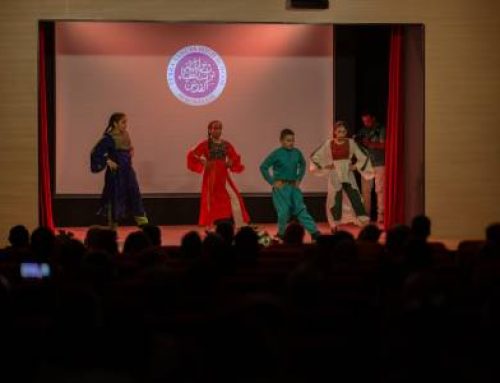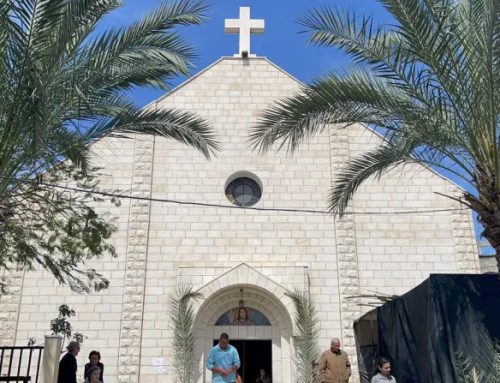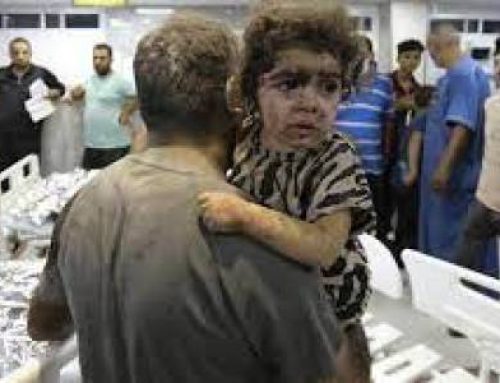ROME, October 8, 2010 – On the eve of the synod on “The Catholic Church in the Middle East: Communion and Witness,” which will be held at the Vatican from October 10-24, it is the very presence of Catholics in those lands that poses problems.
Many of the members of indigenous communities, heirs of the ancient forms of Christianity that flourished there before the arrival of Islam, are fleeing.
The ones who remain live here and there in terror, for example in northern Iraq, in Mosul and the surrounding area, where in order to defend themselves they tend to make ghettos in the plain of Nineveh.
But elsewhere, many other Catholics come for employment, in great numbers. Especially from Asia and above all to the countries of the Gulf.
For example, in Kuwait alone there are two million immigrant workers, twice the number of Kuwaiti citizens. There are 350,000 Catholics, most of them from the Philippines and India. The flow of these immigrants is so massive, in Saudi Arabia and the Gulf, that in Rome they are studying how to redraw the boundaries of the vicariates in that area, dividing into several parts the immense vicariate of Arabia that today combines Saudi Arabia, Oman, Yemen, the United Arab Emirates, Qatar, and Bahrain.
Finally there is the special case of the Catholics in Israel, another situation in complete flux.
*
First of all, the number of Christians within the borders of Israel has not been falling, but in absolute terms it has risen year after year: from 34,000 in 1949 to 150,000 in 2008, the last official figure.
One can speak only of a slight reduction in percentage terms – from 3 to 2 percent – because in the same span of time the number of Jewish citizens has grown from one million to 5.5 million, thanks to immigration from abroad, and the number of Muslims from 111,000 to 1.2 million.
Most of the Christians in Israel live in Galilee, while there are 15,000 of them in Jerusalem.
The exodus of Christians that has set off alarms therefore does not regard Israel, but rather the Holy Land, a geographically flexible term that extends to the Palestinian Territories and parts of the neighboring Arab countries, all the way to Turkey and Cyprus.
*
The news of greatest interest, within the borders of Israel, concerns the Hebrew-speaking Catholics.
The Latin patriarchate of Jerusalem has a specific vicariate dedicated to them, and entrusted today to Jesuit Fr. David Neuhaus, an Israeli Jew who converted to Christianity.
Until a few years ago, there were just a few hundred Hebrew-speaking Catholics in Israel. But they are growing steadily, and today number at least seven communities: in Jerusalem, Jaffa, Be’er Sheva, Haifa, Tiberias, Latrun, and Nazareth.
In an interview with the Italian magazine “Il Regno,” Fr. Neuhaus explained that these communities have been formed by four contributions.
The first contribution came from the Jews who came to Israel in a series of migratory waves, among whom were Catholics, by birth or by conversion, who became an integral part of Hebrew-speaking Israeli society. The last great migratory wave, after 1990, came from the collapse of the Soviet empire.
The second contribution comes from the arrival of foreign workers in Israel. Today there are about 200,000 of them. They come from Africa, from Latin America, from Eastern Europe, and most of all from Asia. 40,000 have come from the Philippines, most of them Catholic women. Their children, born and baptized in Israel, go to school, learn Hebrew, and assimilate into Israeli society.
The third contribution comes from the 2-3 thousand Lebanese Maronites who moved to Israel after the Israeli withdrawal from southern Lebanon, and from the African refugees coming above all from southern Sudan, where there are many Catholics. Their children also grow up speaking Hebrew.
Finally, there are the Palestinian Catholics who have been in Israel since its foundation, with the status of citizenship but in socially disadvantaged conditions. They speak Arabic, and they are based mainly in the villages of Galilee, but they tend to move to the most economically attractive areas. Fr. Neuhaus gives the example of Be’er Sheva, “where hundreds of Arab families have immigrated to work in the businesses around the Bedouin villages, but do not live with the Bedouins because they are of a socially and economically lower class. They send their children to Hebrew-language schools, and so we have a new generation of Palestinian Arabs who speak Arabic only at home, and can no longer read or write it.”
All of these – now several thousand and of the most diverse origins – are the Hebrew-speaking Catholics for whom the vicariate is responsible. Its efforts are especially directed toward the children, with the first catechisms ever published in the language of Israel.
Fr. Neuhaus comments: “We work with limited means. In the patriarchate, the Palestinian Christian majority gets more attention, so the Hebrew-speaking Christians are in a certain sense forgotten. But we are also poor in terms of the persons available to help them: we are an extremely small group with too much to do.”
*
In 2003, the Holy See appointed as head of the vicariate of Jerusalem for Hebrew-speaking Catholics a bishop and Benedictine monk of great ability, Jean Baptiste Gourion, Algerian by birth and himself a convert from Judaism.
The appointment was bitterly criticized by the pro-Palestinian circles of the Catholic Church. In the magazine of the New York Jesuits, “America,” Fr. Drew Christiansen, the current editor, called it “a campaign to divide the church in the Holy Land.”
Unfortunately, Bishop Gurion died shortly afterward, prematurely. And his successors were not made bishops.
Fr. Neuhaus says: “As Hebrew-speaking Catholics, we are a minority twice over, both in the state of Israel and in the Church. Sometimes we have the impression of living in a tiny ghetto.”
One glimmer of hope comes from the base text of the synod on the Middle East that is about to begin at the Vatican, where it says that the existence of the vicariate for Hebrew-speaking Catholics is “a great help” in the dialogue with Judaism.






